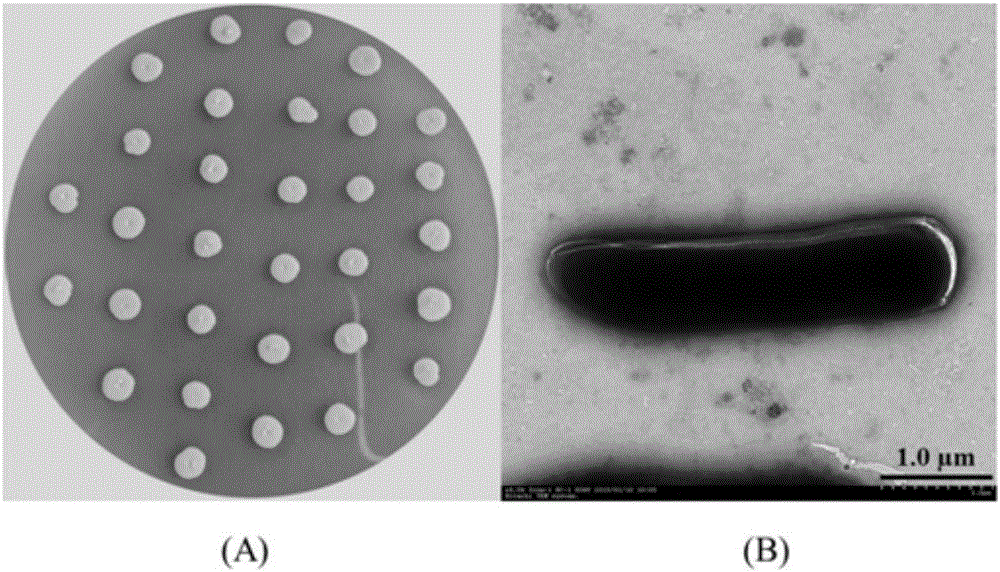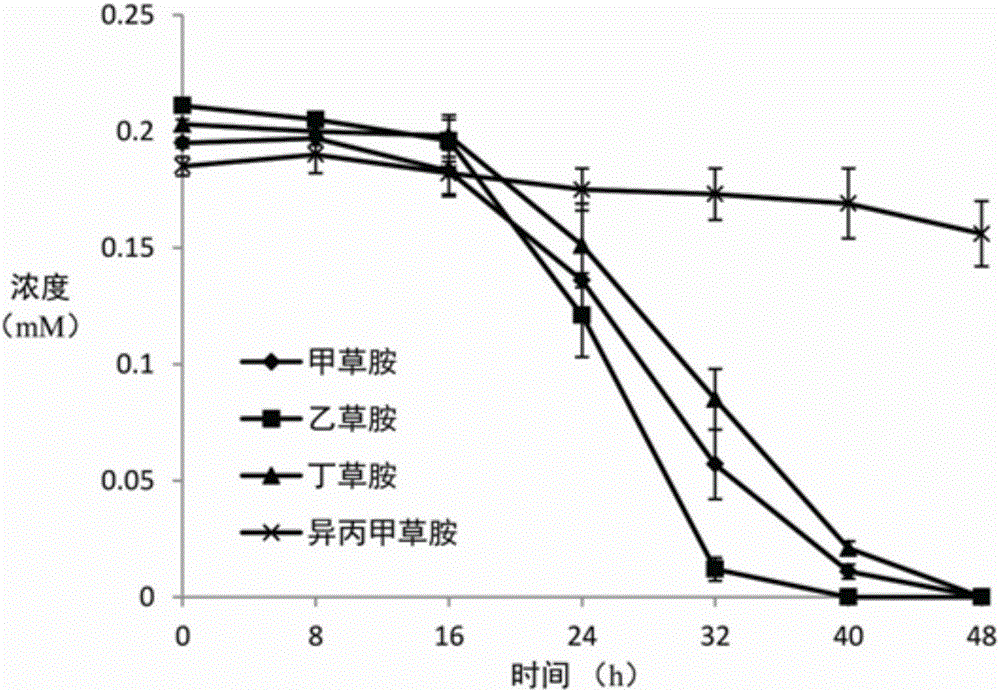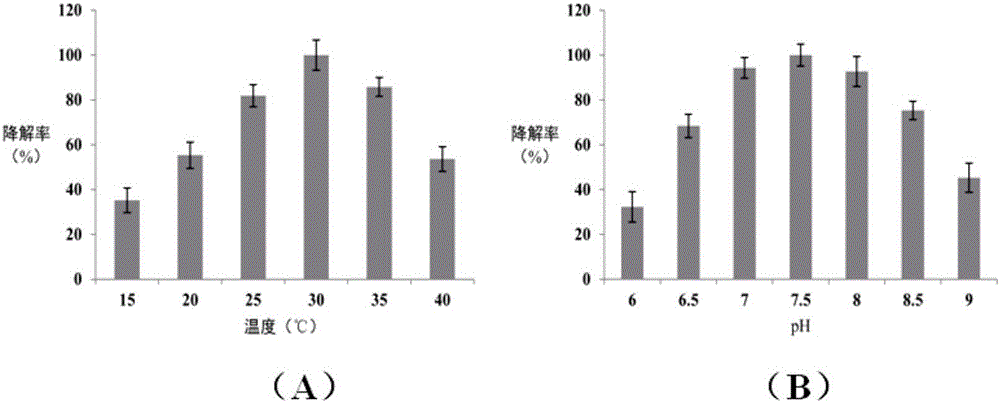Chloroacetamide herbicide degrading strain, bacterium produced thereby and application thereof
A technology of chloroacetamide and herbicide, which is applied to the degrading strain of chloroacetamide herbicides and the bacterial agent produced by it and the application field, which can solve the problems of long time consumption, unfavorable application, and low degradation rate of acetochlor, etc. To achieve the effect of protecting the ecological environment, protecting the health, wide application potential and value
- Summary
- Abstract
- Description
- Claims
- Application Information
AI Technical Summary
Problems solved by technology
Method used
Image
Examples
Embodiment 1
[0030] Embodiment 1, isolation and identification of bacterial strain
[0031] Add 5 g of acetochlor-contaminated soil samples into 100 mL of liquid inorganic salt medium (hereinafter referred to as MM) containing 0.2 mM acetochlor, culture on a shaker at 30°C and 150 rpm for 7 days, and transfer to 5% inoculum size (v / v) In the same fresh medium, enrichment culture was carried out four times in succession. Dilute the fifth-generation enrichment solution on MM solid medium containing 0.2mM acetochlor, culture at 30°C for 5 days, pick a single colony on the plate, transfer it to a 3mL LB test tube for culture, and collect the bacteria by centrifugation. Transfer to 20mL MM medium containing 0.2mM acetochlor, culture at 30°C for 5 days, freeze-dry the culture solution and redissolve it in 5mL methanol, and use UV scanning and high performance liquid chromatography (HPLC) to detect the degradation effect of single colony , and finally isolated and screened an acetochlor-degradin...
Embodiment 2
[0033] Embodiment 2, laboratory degradation experiment
[0034] 2.1 Preparation of seed solution
[0035] Insert the strain AC‐1 into 100mL LB medium containing 0.2mM acetochlor, culture it on a shaker at 30°C and 150rpm, collect the bacteria by centrifugation at 6000rpm after 24h, wash the bacteria twice with MM, and finally resuspend them with 10mLMM, as The seed solution is ready for use.
[0036] 2.2 Degradation of chloroacetamide herbicides by strain AC‐1
[0037] Inoculate the strain AC-1 into 100mLMM containing 0.2mM alachlor, acetochlor, butachlor and metolachlor according to 5% inoculum amount, culture on a shaker at 30°C and 150rpm, every 8 hours Sampling 5mL, taken up to 48 hours. The residues of alachlor, acetochlor, butachlor and metolachlor were detected, the degradation rate was calculated, and the time-degradation curve of strain AC-1 to chloroacetamide herbicides was drawn. like figure 2 , the strain AC-1 can completely degrade 0.2mM acetochlor within 48h,...
Embodiment 3
[0047] Embodiment 3, soil degradation experiment
[0048] The vegetable garden soil was taken as the test soil sample. Pass the soil sample through a 2mm sieve, take a certain amount of alachlor, acetochlor and butachlor powder and dissolve them in 10mL of methanol, and then soak in diatomaceous earth to completely absorb the pesticide. The soaked diatomaceous earth is placed in a fume hood to dry, and it is mixed into the soil so that the concentration of the pesticide in the soil is about 1mg / kg. 500g of each soil sample was cultured in a constant temperature incubator at 30°C, and the inoculum was inserted into the seed solution at an inoculation amount of 10%, and the soil without inoculation was used as a control, and the water holding capacity of the soil was maintained at 60%. After culturing for 7 days, the residual amount was determined by HPLC. The measurement results are shown in Table 1.
[0049] It can be concluded from Table 1 that after 7 days of cultivation,...
PUM
 Login to View More
Login to View More Abstract
Description
Claims
Application Information
 Login to View More
Login to View More - R&D
- Intellectual Property
- Life Sciences
- Materials
- Tech Scout
- Unparalleled Data Quality
- Higher Quality Content
- 60% Fewer Hallucinations
Browse by: Latest US Patents, China's latest patents, Technical Efficacy Thesaurus, Application Domain, Technology Topic, Popular Technical Reports.
© 2025 PatSnap. All rights reserved.Legal|Privacy policy|Modern Slavery Act Transparency Statement|Sitemap|About US| Contact US: help@patsnap.com



